QuestionI have a 7 gallon minibow and had it setup for a few months with a few white-clouds and everything was fine. Finally I figured I would put the white-clouds into a new tank to help cycle that one and repopulated the 7 gallon. First I put in 3 swordtails and they seemed fine. Then I added 2 jellybean fish (fish store near me said they were compatible and the jellybeans where less than an inch). Within a week they had a red spot thing which I treated with nalafix as I was told it was a bacterial infection, only 1 swordtail survived needless to say. Thinking everything was ok, I went and got 2 more swordtails waited a week to see if all was well and it was. I then went back and got 2 dwarf honey gouramies and 2 silver headstanders as they were in the same tank as the swordtails at the petstore. All died but 1 honey gourami within a week. I'm wondering what would be the best way to clean out the tank and if I was to save the gourami and put him back in if it would some-how re-infect the tank. Thanks in advance.
AnswerGood afternoon Chris, thank you for your question.
If your water parameters are acceptable, meaning 0 ppm of ammonia and nitrite, and less than 20 ppm of nitrates, I would suspect that the fish you are purchasing and adding to your tank are carrying something pathogenic from the store.
The only way to guarantee problem-free restocking would be to buy your fish one group, one species at a time, and quarantine them. All you need is a clear container full of clean, cycled water, and a simple box filter with biological media and perhaps activated carbon - nothing more. Read further about how to establish a QT tank:
http://www.drhelm.com/aquarium/quarantine.html
Stay away from fish that are called jellybean fish. These fish are naturally translucent and have had dye injected into their bodies. The coloring is neither real nor permanent, and is harmful to fish. They are more vulnerable to ich, fin rot, tumors and lumps. Their mortality rate is much higher than that of undyed fish. There is really no good reason to buy them! Read more about painted fish:
http://en.wikipedia.org/wiki/Painted_fish
I believe your trouble started when you introduced these fish. Medicating with Melafix is really not going to help much with a bacterial infection - antibiotics will, but you should not be medicating in your main tank, you should be medicating in your quarantine/hospital tank. I am not familiar with Silver Headstanders, see if you can identify the headstander you are referring to from this article:
http://www.wetwebmedia.com/FWSubWebIndex/anostomidae1.htm
These active fish need a larger tank. The honey gourami is a shy fish that needs dither fish to perk up. Honey gouramis also need swimming room, and should have about a 20 gallon tank as an adult. In my experience, it takes months for a honey gourami to color up, but when they do, the color is very intense. Such is true of many beautiful fish...
You seem to prefer the rarer of the community types but also have a thing for livebearers. Given your preferences, my advice would be the following: stock your tank more lightly, and do more frequent water changes. Rinse or replace your filter media more often. The key to combating bacterial infections is clean water. Religious maintenance is crucial in small tanks like yours - they need discipline to thrive.
Speaking of thriving, no swordtail will be able to thrive from youth to adulthood in a 7 gallon tank. Much less 3 swordtails, they are much too active. If your desire is to focus on livebearers, try a couple of platies - there are many variants and their water requirements are similar to swordtails. Water at neutral pH (7.0) or slightly higher and a tablespoon of aquarium salt would be ideal for them.
If you want to keep a species tank of soft water fish, a small shoal of tetras such as rummynose tetras, or a couple of Rams would be my choice. They like their pH to be below neutral and will require very clean water to thrive.
If you clean out the tank completely, it will need to be re-cycled. The addition of BioSpira (a refrigerated Marineland product) will instantly cycle your tank. If you do not plan on adding BioSpira, I recommend changing out 90% of the water, rinsing the gravel in cold dechlorinated tap water, and running fresh activated carbon in the tank.
Test the water after you add the honey gourami (if that is your intention) and make sure the ammonia and nitrite levels are still 0 ppm - in a cycled tank they are always so. Except for perhaps a handful of neon tetras, I would not add any more fish to this small volume of water. Keep in mind that the honey gourami will probably never show its deep colors, until you provide it more swimming room. A 15 gallon would more than double the surface area and thus could hold almost triple the amount of fish. A big improvement!
Good luck to you, feel free to write back anytime.
Nicole

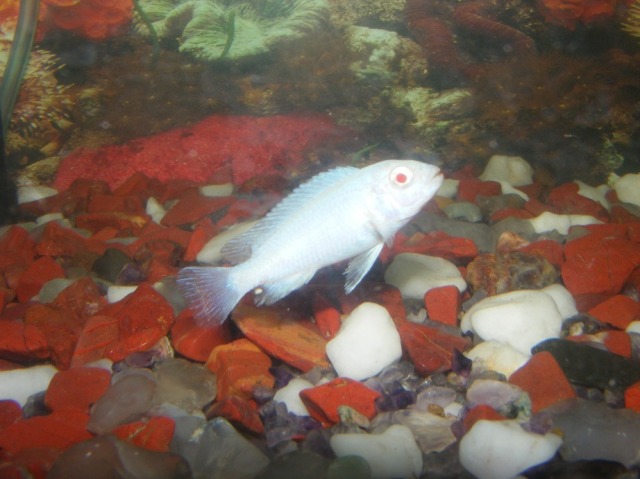 Cichlid identification
Question
Moonlight cichlid (?)
Sir,
Please have a look
Cichlid identification
Question
Moonlight cichlid (?)
Sir,
Please have a look
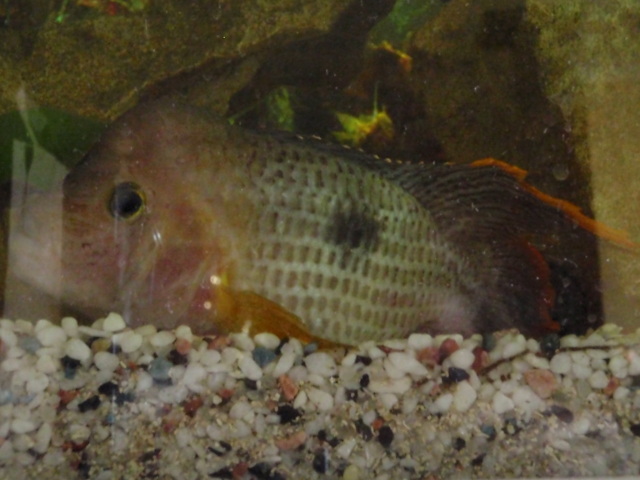 Sinking Green Terror
QuestionGreen Terror Sitting
QUESTION: Hi Ron,
Sinking Green Terror
QuestionGreen Terror Sitting
QUESTION: Hi Ron,
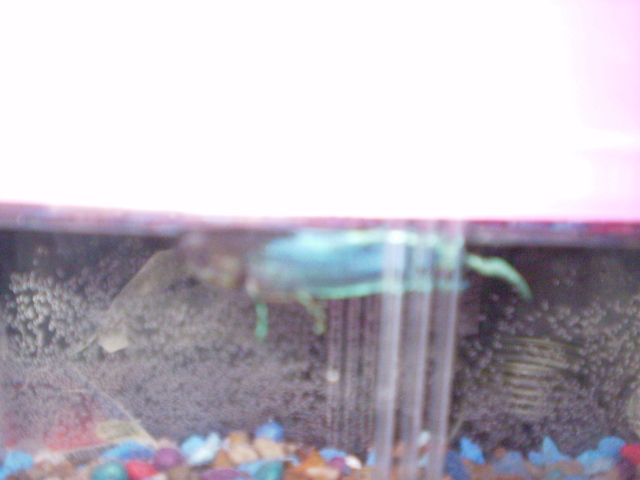 clamped fins,
QuestionQUESTION: I have a Betta that died recently. I
clamped fins,
QuestionQUESTION: I have a Betta that died recently. I
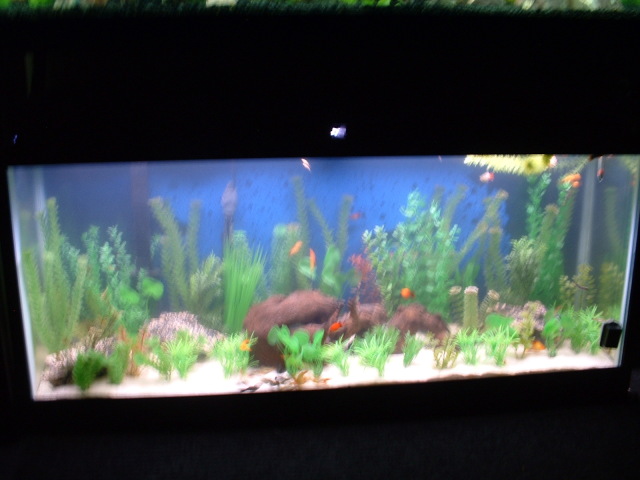 is it TB?
Question
55 galon aquarium
Hi,
I have a 55 gallon fw ta
is it TB?
Question
55 galon aquarium
Hi,
I have a 55 gallon fw ta
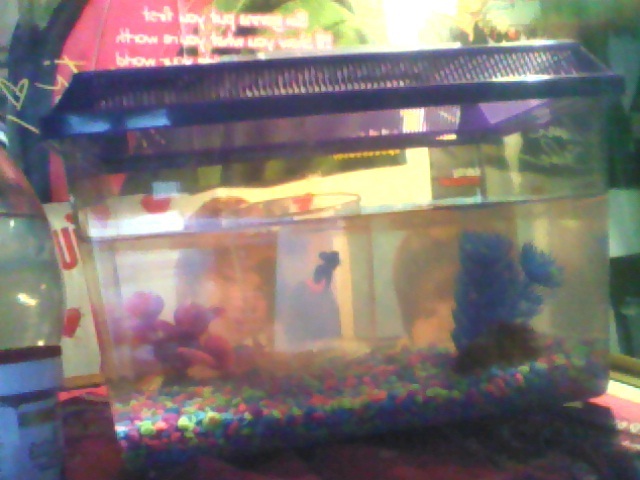 Mating My Bettas
Question
My Betas Geno and Maje
Hi, I got a male crown
Mating My Bettas
Question
My Betas Geno and Maje
Hi, I got a male crown